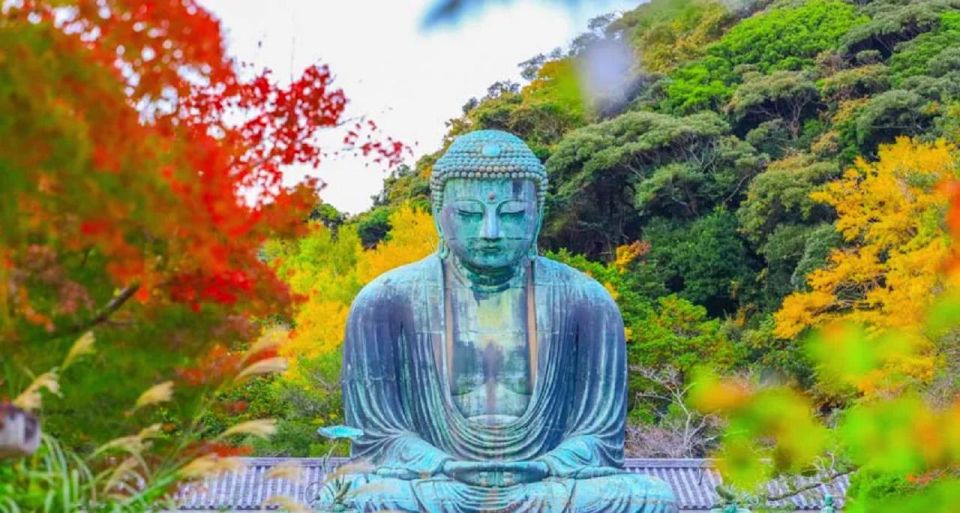Experience the profound journey through history and nature with The Peace Memorial to Miyajima: Icons of Peace and Beauty.
This immersive full-day activity takes you to the heart of Hiroshima, where you will witness the enduring spirit of humanity at the Hiroshima Peace Memorial Park and Museum.
Explore the UNESCO World Heritage Site, the Atomic Bomb Dome, and the Cenotaph for the A-bomb Victims, symbolizing a collective wish for peace.
Discover the serenity of Itsukushima Shrine and the picturesque streets of Miyajima Island, all guided by knowledgeable experts.
Good To Know
![]()
- The Peace Memorial Park and museum in Hiroshima is a powerful reminder of the devastating events of August 6, 1945.
- The Itsukushima Shrine and Tenshinkaku on Miyajima Island showcase the harmonious relationship between humanity and nature.
- Exploring the serene nature and hills behind the Itsukushima Shrine offers a guided tour and a glimpse into Japan’s rich heritage.
- Miyajima Island is a charming destination with hidden treasures, local delicacies, quaint boutiques, and traditional tea houses to explore.
Peace Memorial Park: A Symbol of Humanity’s Endurance
![]()
As a testament to the enduring spirit of humanity, the Peace Memorial Park stands as a symbol of resilience and hope. Located in Hiroshima, this park is a powerful reminder of the devastating events that took place on August 6, 1945, when an atomic bomb was dropped on the city.
The park is home to the iconic Atomic Bomb Dome, a UNESCO World Heritage Site that serves as a witness to the tragedy. The Cenotaph for the A-bomb Victims and the eternal Flame of Peace further symbolize the world’s collective wish for peace and a world free from nuclear weapons.
Amidst the sorrowful history, the beauty of Miyajima Island offers solace and serenity. Visitors can explore the island’s charming streets, try local delicacies, and visit the Itsukushima Shrine and Tenshinkaku, which showcase Japan’s rich heritage and architectural beauty.
The Peace Memorial Park and Miyajima Island together create a profound experience that combines the enduring spirit of Hiroshima with the tranquility and beauty of nature.
The Atomic Bomb Dome: Witness to Devastating History
![]()
The Atomic Bomb Dome, a UNESCO World Heritage Site, stands as a solemn testament to the devastating history that unfolded in Hiroshima on August 6, 1945. This iconic structure, also known as the Hiroshima Peace Memorial, was once the Hiroshima Prefectural Industrial Promotion Hall. Today, it serves as a powerful reminder of the destructive power of atomic weapons and the resilience of Hiroshima in the face of tragedy.
The dome stands as a haunting symbol of the atomic bomb’s impact, with its skeletal remains serving as a stark reminder of the destruction caused by the blast.
Despite the immense devastation, Hiroshima’s reconstruction efforts have transformed the city into a thriving metropolis, showcasing the determination and resilience of its people.
The Atomic Bomb Dome serves as a solemn memorial, honoring the lives lost and reminding the world of the importance of peace and the elimination of nuclear weapons.
Hiroshima’s reconstruction and resilience are embodied in the Atomic Bomb Dome, a poignant reminder of the past and a symbol of hope for a peaceful future.
Cenotaph for A-bomb Victims: A Collective Wish for Peace
![]()
Standing as a symbol of collective hope and remembrance, the Cenotaph for A-bomb Victims embodies a heartfelt wish for everlasting peace. Located in Hiroshima’s Peace Memorial Park, this solemn monument serves as a poignant reminder of the devastating impact of nuclear warfare.
The cenotaph, designed by architect Kenzo Tange, is a curved concrete structure that shelters a stone chest containing the names of the victims of the atomic bomb. It represents the collective healing and global impact of the tragedy, as people from all over the world come to pay their respects and reflect on the consequences of war.
The Cenotaph for A-bomb Victims stands as a powerful symbol of humanity’s commitment to peace, urging us to work towards a future free from the horrors of nuclear weapons.
Eternal Flame of Peace: Commitment to Nuclear-Free World
![]()
Embodying a steadfast commitment to a world free from nuclear weapons, the Eternal Flame of Peace stands as a powerful symbol within the Hiroshima Peace Memorial Park. This eternal flame represents the unwavering commitment to disarmament and the global peace efforts.
Here is why the Eternal Flame of Peace holds such significance:
-
A Beacon of Hope: The eternal flame serves as a beacon of hope, reminding visitors of the devastating consequences of nuclear warfare and the urgent need for peace and disarmament.
-
Remembrance and Tribute: The flame honors the memory of the victims of the atomic bomb and serves as a tribute to their suffering. It reminds us of the importance of working towards a world without nuclear weapons.
-
Inspiring Action: The Eternal Flame of Peace inspires visitors to take action towards achieving global peace. It serves as a constant reminder that every individual has a role to play in promoting peace and advocating for disarmament.
Hiroshima Peace Memorial Museum: Profound Insights Into Tragic Events
![]()
The Hiroshima Peace Memorial Museum offers a profound understanding of the tragic events that occurred on August 6, 1945. It takes visitors on an emotional journey through history, providing deep insights into the impact of the atomic bomb on Hiroshima.
The museum showcases a collection of artifacts, photographs, and personal stories that vividly depict the devastation and suffering caused by the bomb. Through interactive exhibits and detailed explanations, visitors gain a comprehensive understanding of the events leading up to the bombing, the immediate aftermath, and the long-term effects on the city and its residents.
The museum also highlights the resilience and determination of the survivors, as well as the global call for peace and nuclear disarmament. It is a somber and thought-provoking experience that reminds us of the importance of working towards a world free from the horrors of nuclear weapons.
Itsukushima Shrine: A Floating Symbol of Harmony
![]()
A symbol of harmony, the Itsukushima Shrine gracefully floats on the Seto Inland Sea during high tide. This iconic shrine holds great significance and is a testament to Japan’s rich cultural heritage. Here are three reasons why the Itsukushima Shrine is a must-visit destination:
-
Significance: The Itsukushima Shrine is considered one of Japan’s most important Shinto shrines. It holds deep religious significance as a place of worship and has been designated as a UNESCO World Heritage site. The shrine’s spiritual aura and stunning natural surroundings create a sense of tranquility and reverence.
-
Architecture: The Itsukushima Shrine showcases exquisite Japanese architectural beauty. The most recognizable feature is the floating gate, or torii, which appears to be suspended in the water during high tide. This symbolic gateway represents the harmonious relationship between humanity and nature. The shrine’s pavilions and structures are meticulously designed, reflecting the elegance and grace of traditional Japanese architecture.
-
Awe-inspiring experience: A visit to the Itsukushima Shrine offers a truly awe-inspiring experience. As you approach the shrine by boat, the sight of the floating gate against the backdrop of the sea is breathtaking. The serene atmosphere, surrounded by lush greenery and the sound of the waves, creates a sense of peace and beauty. Exploring the shrine and its surroundings allows visitors to connect with Japan’s cultural heritage and appreciate the harmony between human creations and the natural world.
Tenshinkaku: Serene Retreat of Architectural Beauty
![]()
Nestled amidst the serene surroundings, Tenshinkaku beckons visitors with its tranquil ambiance and exquisite architectural beauty. This serene retreat showcases the epitome of Japanese architectural beauty, captivating all who set foot inside.
Tenshinkaku is a pavilion that offers a glimpse into Japan’s rich heritage, immersing visitors in a world of elegance and grace. The intricate details and craftsmanship of the structure are awe-inspiring, with every corner revealing a new level of architectural brilliance.
As you wander through the halls, you can’t help but feel a sense of peace and tranquility enveloping you. The combination of the serene surroundings and the architectural beauty of Tenshinkaku creates a truly enchanting experience that will leave a lasting impression on all who visit.
Miyajima Island Stroll: Discovering Charms and Delicacies
Continuing the exploration from the previous points, one can discover the charms and indulge in the delightful delicacies of Miyajima Island.
Here are three things to look forward to during a stroll on this enchanting island:
-
Discovering Local Cuisine: Miyajima Island is known for its delicious local delicacies. One must try the famous Momiji Manju, maple-leaf-shaped cakes filled with flavors like red bean paste or custard. These sweet treats are a delight for the taste buds and make for a perfect souvenir to take home.
-
Traditional Tea Houses: Enjoy the tranquility of Miyajima Island by visiting one of the traditional tea houses. These serene retreats offer a peaceful atmosphere where you can relax and enjoy a cup of authentic Japanese tea. Experience the rich tea culture of Japan while taking in the beautiful surroundings.
-
Tranquility: Miyajima Island is a haven of tranquility. As you stroll through its charming streets, you’ll feel a sense of peace and serenity. The island’s natural beauty, with its lush hills and picturesque landscapes, creates a calming ambiance that invites you to slow down and appreciate the moment.
Indulge in the local cuisine, visit traditional tea houses, and learn about the tranquility of Miyajima Island for an unforgettable experience.
Common questions
![]()
How Much Does It Cost to Visit the Peace Memorial Park and Museum?
The cost of visiting the Peace Memorial Park and Museum varies depending on the type of ticket and any additional services included. There are also accessibility options available for those with disabilities.
Can I Bring My Own Food and Drinks to Miyajima Island?
Yes, you are allowed to bring your own food and drinks to Miyajima Island. However, it is also worth trying the local cuisine options available on the island, such as the famous Momiji Manju maple-leaf-shaped cakes.
Is the Boat Ride to Miyajima Island Included in the Tour Price?
Yes, the boat ride to Miyajima Island is included in the tour price. This scenic journey allows you to enjoy the beauty of the Seto Inland Sea and adds to the overall experience of visiting the Peace Memorial and Itsukushima Shrine.
Are There Any Restrictions on Photography in the Peace Memorial Park or Museum?
Photography restrictions at the Peace Memorial Park and Museum aim to maintain the solemn atmosphere and respect for the victims. Visitors are encouraged to capture the beauty of the park through photography while being mindful of the sensitive nature of the site.
How Long Is the Guided Tour of the Serene Nature and Hills Behind Itsukushima Shrine on Miyajima Island?
The guided tour of the serene nature and hills behind Itsukushima Shrine on Miyajima Island offers a captivating experience. Enjoy the breathtaking scenic beauty as you explore hidden treasures and appreciate the tranquility of this enchanting location.
The Sum Up
To sum it up, the Peace Memorial to Miyajima offers a captivating journey through the landmarks of Hiroshima and Miyajima Island.
This immersive experience showcases the enduring spirit of humanity at the Hiroshima Peace Memorial Park and Museum, while also highlighting the serene beauty of Itsukushima Shrine and Miyajima Island.
With its historical significance and natural charm, this activity provides an unforgettable opportunity to witness icons of peace and beauty.

